👨🏼🎓 Running School
We’ve created a short video explainer for each type of session you’ll be doing as part of your First 42k training. Check them all out below, and if you have any questions, hit the chat icon and ask!
What is an Absorption Run?


What is an Absorption Run?
Absorption Runs (also known as Recovery Runs) are very low-intensity runs performed to assist recovery and aid physiologic adaptation.
They help to promote movement and blood flow into healing muscles, which is essential for endurance running.
They should be run at a pace that you can hold a conversation.
What is an Endurance Run?


What is an Endurance Run?
Endurance Runs are your weekly long-distance runs, done at a comfortable pace. It is an essential part of your training that helps the body and mind adapt to increased distances. It also helps you get familiar with the physical and mental challenges that you might face during a race.
What is a Fartlek Run?


What is a Fartlek Run?
Fartlek (Swedish for “speed play”) sessions work on speed and stamina by alternating between easy and hard running. They are the easiest way to tackle speedwork by ramping up the pace when you feel good and slowing down when you need a break.
What are the benefits of Hill Sessions?


What are the benefits of Hill Sessions?
Hill sessions are a great way to develop speed and strength as it requires extra effort to run uphill, so you don’t need to run as fast as you would on a flat section. They’re also great for learning how to descend efficiently and control of your breathing.
What are Intervals?


What are Intervals?
Interval sessions are a series of speed intervals typically run on a flat surface. This type of workout is ideally done on a track as it means you can accurately measure your set distances, but it can be done just about anywhere, using street lights or even trees as interval markers.
What is a Progression Run?


What is a Progression Run?
Progression Runs help to improve stamina and allow the body to adapt to the stress of running. We call them progression runs because we build your pace over the course of each run by starting at a slow comfortable pace and finishing at a pace that is faster than your average Endurance Run pace.
What are Run Throughs?


What are Run Throughs?
“Run-Throughs”, also known as Strides, are usually done before a run or workout and performed as a series of short intervals. They should become faster in pace with each “Run-Through”, with the first being the longest and the slowest, the last being the shortest and fastest. There should only be a very brief recovery between each “Run-Through”.
What is a Tempo Run?


What is a Tempo Run?
A Tempo Run (also known as a lactate-threshold run) is a faster-paced run often described as comfortably hard. It should be done at a controlled pace and can be performed as long intervals or a steady run of 1-10 kms. As a rule of thumb a Tempo Run should be at the pace you could race for an hour. The purpose of a Tempo Run is to build mental and physical endurance and to become comfortable with being uncomfortable.
What is a Time Trial?
The time trial is not a race! It’s a chance to measure your current level of performance against the clock.
As long as it’s a set distance that can be easily measured and re-run at a later date, do it and run it as fast as you can. Once you’ve finished, check your watch. Your time is your benchmark. After four weeks of solid training, try the same distance again and see how much you’ve improved!
What are Turnarounds?


What are Turnarounds?
Turnarounds are practised during short fast intervals. Rather than stopping at the end of an interval, run through the line and turn around as quickly and safely as you can to start the next repeat without stopping for rest.

